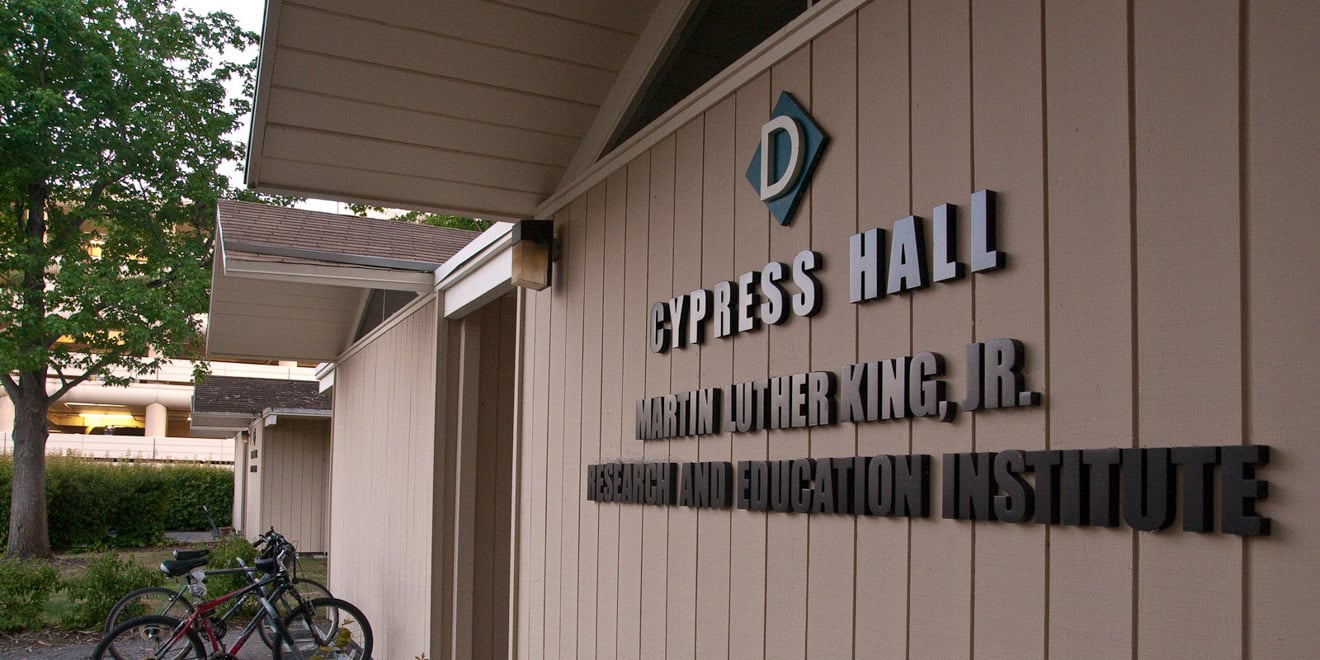In 1985, Coretta Scott King asked professor of history Clayborne Carson to edit and assemble the papers of Dr. Martin Luther King, Jr. in the beginnings of the King Papers Project. Today, the Papers Project is part of the Martin Luther King, Jr. Research and Education Institute, housed in a temporary building on the Stanford campus.
“At the time, I really didn’t know quite what [the Papers Project] involved,” said Carson, who is the Martin Luther King, Jr., Centennial Professor of History and Ronnie Lott Founding Director of the King Institute. “I didn’t know how many materials related to Martin Luther King there are, and it turns out there are hundreds of thousands of pieces of information.”

According to a Stanford News article, the Institute is “one of only a few large-scale research ventures that focus on an African-American.”
But despite its accomplishments, some say that few people on campus seem to know that the Institute exists. In January, Alex Ramsey ’17 wrote an op-ed decrying the lack of awareness that surrounds the Institute.
“I’ve talked, unfortunately, to a lot of students graduating from Stanford, and they go through four years and they have no idea that the papers of Martin Luther King are being edited on campus,” Carson said. “The world’s greatest source of information about Martin Luther King is right here.”
Despite the preeminence of the King Institute, however, the Institute has faced difficulties with housing. In 1985, when the King Papers Project began, it was housed in an office in Meyer Library. Staff worked in the same room around a long table. There was not enough space for Carson to have a separate office. In 1989, the Papers Project moved to Cypress Hall D, part of a group of portables used as offices and conference rooms located at the end of the Engineering Quad. The Papers Project, under the King Institute, remains in Cypress Hall today.
“I feel that it diminishes Stanford to see King in a temporary building,” Carson said.
Following a donation from professional football player Ronnie Lott and his All Stars Helping Kids organization, the King Institute was established in 2005 by Carson and has been directed by him since then. Subsequently, he incorporated the King Papers Project into the Institute.
Allyson Hobbs, associate professor of American history and director of African and African American studies, called the King Institute’s work “incredibly relevant and incredibly urgent” and explained that it is especially important for students to gain a better understanding of activism.
“Now more than ever, you could argue we need to be learning more about King and other civil rights leaders and other activists,” Hobbs said. “And it seems like those are issues that the students are very concerned about and very interested in as well.”
The King Papers Project is in the process of compiling and publishing a 14-volume collection of letters, sermons, interviews, speeches and writings, both published and unpublished, penned by King. So far, seven of the 14 volumes have been published.
Along with the Papers Project, the Institute’s enterprises include writing a biography of King and providing educational resources for students and teachers, among others. Carson’s dream is to make the Institute’s accumulated research available to anyone in the world.
Carson also pointed out that the King Institute does not necessarily need more space for the work it entails, and that space on campus is hard to come by. However, he felt that the fact that the Institute is still housed in a temporary facility and remains relatively invisible on campus is symbolic.
“We’ve got nice offices here, so it’s not like we are clamoring for more space,” Carson said. “I think the real question is, what does it represent symbolically, to Stanford?
“I’ve had people come here and they’ve read our books and read about us and they come up and it’s kind of like, ‘Is this all?’”
Hobbs expressed concern that the Institute’s location “creates an intellectual distance” between students and its mission, and hoped that it would one day become a more visible, central part of campus and student life.
Julie Hardin-Stauter, director of facilities and capital planning for the School of Humanities and Sciences, stated in an email to The Daily that there are no current plans to upgrade the Institute’s building from Cypress Hall D to a more permanent facility.
“Buildings in Stanford’s historic central campus are limited in the amount of new academic and administrative space they can accommodate, so it is not unusual for programs and offices to be located outside that area,” explained Ernest Miranda, senior director of university media relations, in an email to The Daily on behalf of the School of Humanities and Sciences.
However, Carson and Hobbs both stressed the value that might arise from locating the King Institute in a more visible building on campus. Carson hoped that one day, other social justice projects and activities on campus could be integrated into the King Institute. Hobbs also felt that the Institute could be more deeply connected with other programming.
“I think that part of what the King Institute does so beautifully is to educate people about King the man, but also about principles of nonviolence, about principles of pacifism, about principles of economic justice, of activism for global peace,” Hobbs said. “It has such a wide mission that I feel that there’s so many departments and so many parts of campus that intersect with the King Institute, and I don’t think we’ve made all the connections that we should be making.”
If he had to decide between spending an endowment on a new building or on supporting the Institute’s work, said Carson, he would “rather choose the work, because to me that’s very important, and I think that ultimately someone will see the work and say it should be done in a more appropriate building.”
Contact Elise Most at emost ‘at’ stanford.edu.
